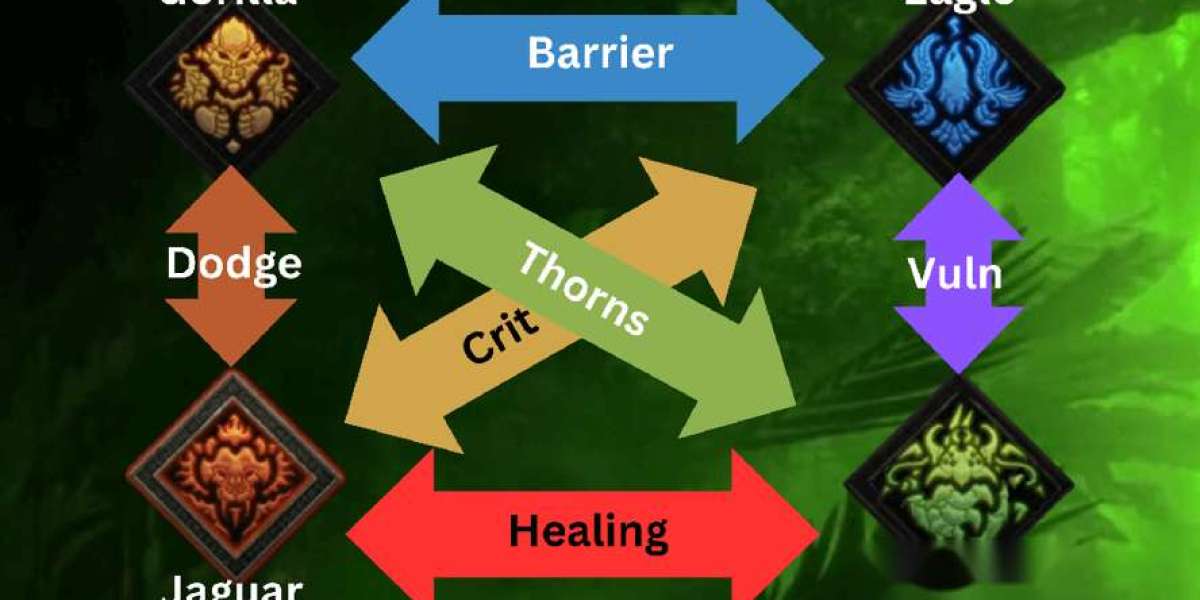
We've been tracking the explosive increase of DeepSeek R1, which has actually taken the AI world by storm in current weeks. In this session, we dove deep into the advancement of the DeepSeek household - from the early designs through DeepSeek V3 to the advancement R1. We likewise explored the technical developments that make R1 so special in the world of open-source AI.
The DeepSeek Ancestral Tree: From V3 to R1

DeepSeek isn't simply a single design; it's a household of increasingly advanced AI systems. The advancement goes something like this:
DeepSeek V2:
This was the structure design which leveraged a mixture-of-experts architecture, where just a subset of specialists are utilized at inference, drastically improving the processing time for each token. It likewise included multi-head latent attention to minimize memory footprint.
DeepSeek V3:
This design presented FP8 training strategies, which assisted drive down training costs by over 42.5% compared to previous versions. FP8 is a less accurate method to keep weights inside the LLMs but can significantly enhance the memory footprint. However, training using FP8 can generally be unsteady, and it is tough to obtain the desired training outcomes. Nevertheless, DeepSeek utilizes multiple techniques and attains remarkably stable FP8 training. V3 set the phase as an extremely efficient design that was currently cost-effective (with claims of being 90% less expensive than some closed-source options).
DeepSeek R1-Zero:
With V3 as the base, the group then presented R1-Zero, the very first reasoning-focused version. Here, the focus was on teaching the model not simply to create answers but to "think" before answering. Using pure reinforcement learning, the model was motivated to produce intermediate reasoning steps, for example, taking extra time (frequently 17+ seconds) to resolve an easy issue like "1 +1."
The crucial development here was using group relative policy optimization (GROP). Instead of counting on a conventional process reward model (which would have required annotating every step of the thinking), GROP compares numerous outputs from the model. By sampling a number of potential responses and scoring them (utilizing rule-based steps like specific match for math or verifying code outputs), the system learns to favor reasoning that leads to the appropriate result without the requirement for specific guidance of every intermediate idea.
DeepSeek R1:
Recognizing that R1-Zero's not being watched technique produced thinking outputs that could be tough to read or perhaps mix languages, the designers went back to the drawing board. They used the raw outputs from R1-Zero to generate "cold start" data and after that manually curated these examples to filter and improve the quality of the thinking. This human post-processing was then utilized to tweak the initial DeepSeek V3 design further-combining both reasoning-oriented support knowing and monitored fine-tuning. The result is DeepSeek R1: a model that now produces understandable, coherent, and reliable reasoning while still maintaining the effectiveness and cost-effectiveness of its predecessors.
What Makes R1 Series Special?
The most interesting element of R1 (no) is how it established thinking capabilities without specific supervision of the thinking process. It can be even more enhanced by utilizing cold-start data and supervised reinforcement discovering to produce legible thinking on basic jobs. Here's what sets it apart:
Open Source & Efficiency:
R1 is open source, permitting researchers and designers to examine and develop upon its innovations. Its cost effectiveness is a significant selling point specifically when compared to closed-source designs (claimed 90% less expensive than OpenAI) that need enormous calculate budgets.
Novel Training Approach:
Instead of relying solely on annotated reasoning (which is both pricey and time-consuming), the design was trained utilizing an outcome-based technique. It started with quickly proven tasks, such as mathematics problems and coding workouts, where the accuracy of the final response could be easily determined.
By utilizing group relative policy optimization, the training process compares multiple generated answers to identify which ones fulfill the preferred output. This relative scoring mechanism allows the model to discover "how to believe" even when intermediate thinking is produced in a freestyle manner.
Overthinking?
A fascinating observation is that DeepSeek R1 sometimes "overthinks" easy problems. For instance, when asked "What is 1 +1?" it might spend almost 17 seconds evaluating different scenarios-even thinking about binary representations-before concluding with the right answer. This self-questioning and verification procedure, although it might seem ineffective at first glimpse, might show helpful in intricate jobs where deeper reasoning is essential.
Prompt Engineering:
Traditional few-shot triggering methods, which have worked well for many chat-based models, can really deteriorate performance with R1. The designers advise utilizing direct problem statements with a zero-shot technique that specifies the output format plainly. This makes sure that the design isn't led astray by extraneous examples or hints that may disrupt its internal reasoning process.
Getting Started with R1
For those aiming to experiment:
Smaller variations (7B-8B) can operate on consumer GPUs or even just CPUs

Larger versions (600B) need significant calculate resources
Available through significant cloud suppliers
Can be deployed in your area via Ollama or vLLM
Looking Ahead
We're especially fascinated by numerous ramifications:
The potential for this method to be applied to other reasoning domains
Influence on agent-based AI systems typically constructed on chat models
Possibilities for integrating with other guidance techniques
Implications for business AI implementation
Thanks for checking out Deep Random Thoughts! Subscribe free of charge to get new posts and support my work.
Open Questions
How will this impact the development of future thinking designs?
Can this method be extended to less verifiable domains?
What are the ramifications for multi-modal AI systems?
We'll be watching these developments closely, particularly as the community begins to try out and construct upon these strategies.
Resources
Join our Slack community for continuous conversations and updates about DeepSeek and other AI advancements. We're seeing fascinating applications currently emerging from our bootcamp participants working with these designs.
Chat with DeepSeek:
https://www.deepseek.com/
Papers:
DeepSeek LLM
DeepSeek-V2
DeepSeek-V3
DeepSeek-R1
Blog Posts:
The Illustrated DeepSeek-R1
DeepSeek-R1 Paper Explained
DeepSeek R1 - a short summary
Cloud Providers:
Nvidia
Together.ai
AWS
Q&A
Q1: Which model is worthy of more attention - DeepSeek or Qwen2.5 Max?
A: While Qwen2.5 is also a strong model in the open-source neighborhood, the choice ultimately depends on your usage case. DeepSeek R1 stresses sophisticated reasoning and an unique training technique that may be particularly valuable in jobs where verifiable logic is important.
Q2: Why did significant service providers like OpenAI choose monitored fine-tuning instead of reinforcement learning (RL) like DeepSeek?
A: We need to keep in mind in advance that they do utilize RL at the really least in the form of RLHF. It is highly likely that models from major suppliers that have thinking capabilities already utilize something similar to what DeepSeek has done here, but we can't make certain. It is likewise likely that due to access to more resources, they favored supervised fine-tuning due to its stability and the prepared availability of large annotated datasets. Reinforcement learning, engel-und-waisen.de although effective, can be less foreseeable and harder to control. DeepSeek's technique innovates by using RL in a reasoning-oriented manner, allowing the model to discover efficient internal reasoning with only very little process annotation - a strategy that has shown promising despite its intricacy.
Q3: Did DeepSeek utilize test-time calculate strategies similar to those of OpenAI?
A: DeepSeek R1's design stresses effectiveness by leveraging methods such as the mixture-of-experts technique, which activates just a subset of specifications, to decrease calculate throughout reasoning. This concentrate on performance is main to its cost advantages.
Q4: What is the distinction between R1-Zero and R1?
A: R1-Zero is the initial design that discovers thinking exclusively through support learning without specific process supervision. It creates intermediate thinking steps that, while in some cases raw or combined in language, serve as the foundation for learning. DeepSeek R1, on the other hand, improves these outputs through human post-processing and monitored fine-tuning. In essence, R1-Zero supplies the unsupervised "trigger," and R1 is the polished, more coherent version.
Q5: How can one remain upgraded with thorough, technical research while handling a hectic schedule?
A: Remaining existing includes a mix of actively engaging with the research neighborhood (like AISC - see link to sign up with slack above), following preprint servers like arXiv, participating in pertinent conferences and webinars, and 35.237.164.2 participating in conversation groups and fishtanklive.wiki newsletters. Continuous engagement with online communities and collective research study projects also plays an essential function in keeping up with technical advancements.
Q6: In what use-cases does DeepSeek exceed designs like O1?
A: The short answer is that it's too early to tell. DeepSeek R1's strength, nevertheless, lies in its robust reasoning capabilities and its efficiency. It is particularly well fit for jobs that require proven logic-such as mathematical problem fixing, code generation, and structured decision-making-where intermediate thinking can be evaluated and confirmed. Its open-source nature even more enables tailored applications in research study and enterprise settings.
Q7: What are the ramifications of DeepSeek R1 for enterprises and start-ups?
A: The open-source and cost-effective design of DeepSeek R1 decreases the entry barrier for deploying innovative language designs. Enterprises and start-ups can utilize its innovative thinking for agentic applications ranging from automated code generation and consumer assistance to data analysis. Its flexible release options-on customer hardware for smaller sized models or cloud platforms for larger ones-make it an attractive option to proprietary options.
Q8: Will the model get stuck in a loop of "overthinking" if no proper answer is found?

A: While DeepSeek R1 has actually been observed to "overthink" simple issues by exploring several reasoning paths, it includes stopping criteria and evaluation systems to avoid infinite loops. The reinforcement finding out structure motivates convergence towards a verifiable output, even in uncertain cases.
Q9: Is DeepSeek V3 completely open source, and is it based on the Qwen architecture?
A: Yes, DeepSeek V3 is open source and served as the foundation for later iterations. It is constructed on its own set of innovations-including the mixture-of-experts method and FP8 training-and is not based on the Qwen architecture. Its style emphasizes effectiveness and cost reduction, setting the phase for the reasoning innovations seen in R1.
Q10: How does DeepSeek R1 carry out on vision tasks?
A: DeepSeek R1 is a text-based design and does not incorporate vision capabilities. Its style and training focus exclusively on language processing and thinking.
Q11: Can professionals in specialized fields (for instance, labs working on remedies) apply these techniques to train domain-specific designs?
A: Yes. The innovations behind DeepSeek R1-such as its outcome-based thinking training and efficient architecture-can be adjusted to numerous domains. Researchers in fields like biomedical sciences can tailor these techniques to construct designs that address their particular difficulties while gaining from lower calculate expenses and robust reasoning capabilities. It is most likely that in deeply specialized fields, however, there will still be a need for supervised fine-tuning to get reliable outcomes.
Q12: Were the annotators for the human post-processing professionals in technical fields like computer technology or mathematics?
A: The discussion suggested that the annotators mainly focused on domains where correctness is easily verifiable-such as mathematics and coding. This recommends that competence in technical fields was certainly leveraged to ensure the accuracy and clearness of the thinking information.
Q13: Could the design get things wrong if it relies on its own outputs for discovering?
A: While the model is created to enhance for right answers through support learning, there is always a threat of errors-especially in uncertain situations. However, by assessing multiple prospect outputs and reinforcing those that lead to verifiable outcomes, the training process lessens the likelihood of propagating incorrect thinking.
Q14: How are hallucinations lessened in the design given its iterative thinking loops?
A: The use of rule-based, proven jobs (such as mathematics and coding) assists anchor the model's reasoning. By comparing multiple outputs and utilizing group relative policy optimization to reinforce just those that yield the right outcome, the design is assisted away from generating unfounded or hallucinated details.
Q15: Does the design rely on complex vector mathematics?
A: Yes, advanced techniques-including complex vector math-are integral to the implementation of mixture-of-experts and attention systems in DeepSeek R1. However, the main focus is on utilizing these techniques to make it possible for reliable reasoning rather than showcasing mathematical complexity for its own sake.
Q16: Some stress that the model's "thinking" might not be as refined as human reasoning. Is that a valid concern?
A: Early iterations like R1-Zero did produce raw and often hard-to-read reasoning. However, the subsequent refinement process-where human professionals curated and enhanced the thinking data-has considerably enhanced the clarity and reliability of DeepSeek R1's internal idea procedure. While it remains a progressing system, iterative training and feedback have actually caused significant improvements.
Q17: Which model variations are appropriate for regional deployment on a laptop with 32GB of RAM?
A: For regional testing, a medium-sized model-typically in the range of 7B to 8B parameters-is advised. Larger designs (for example, those with hundreds of billions of specifications) need substantially more computational resources and are better fit for cloud-based deployment.
Q18: Is DeepSeek R1 "open source" or does it offer only open weights?
A: DeepSeek R1 is supplied with open weights, suggesting that its design criteria are publicly available. This lines up with the overall open-source approach, allowing researchers and designers to further explore and construct upon its developments.
Q19: What would occur if the order of training were reversed-starting with monitored fine-tuning before not being watched support knowing?

A: The present technique enables the model to initially explore and produce its own reasoning patterns through not being watched RL, and then refine these patterns with supervised approaches. Reversing the order may constrain the model's capability to discover diverse reasoning paths, potentially limiting its total performance in jobs that gain from autonomous idea.
Thanks for checking out Deep Random Thoughts! Subscribe for totally free to receive new posts and support my work.








